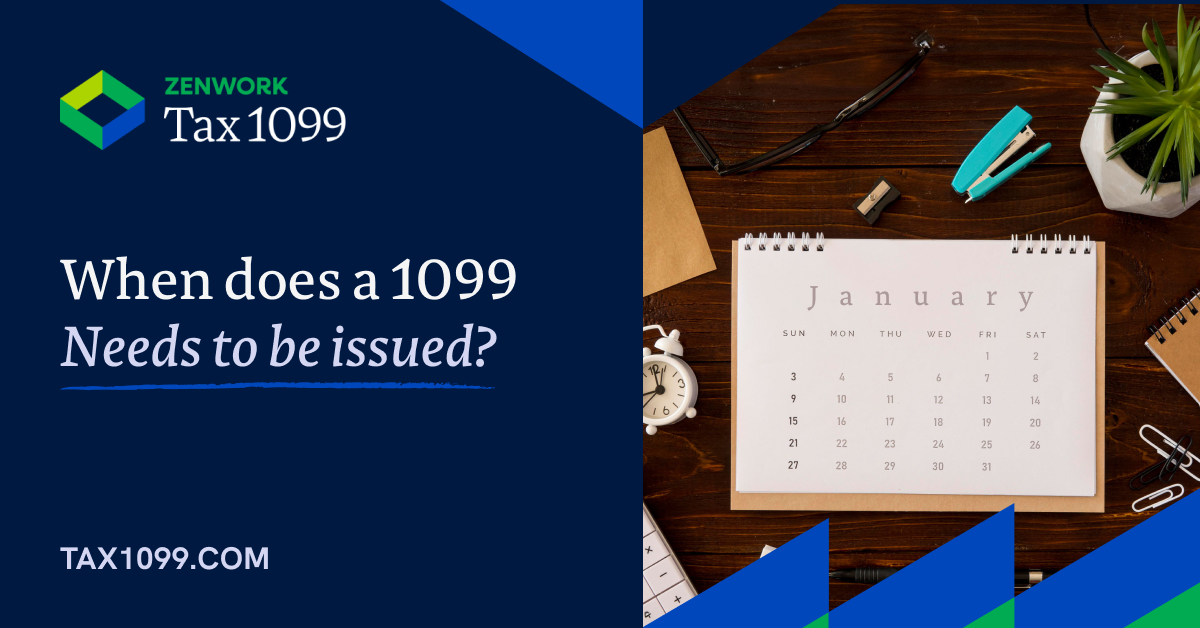As a business owner or contractor, knowing when you’re supposed to issue a 1099 form is crucial. It’s not just about tracking your payments; it’s about following IRS rules. You are required to issue a 1099 if you’ve paid someone more than $600 for services, rent, prizes, or other income types. Each form type can have its own reporting threshold, and it is important to know what each one is. The IRS uses these forms to track the money others make and ensure everyone pays their fair share of taxes.
Not getting this right might mean facing IRS penalties. That’s why understanding when you need to send a 1099 is so important. This guide will walk you through the rules and help you avoid any issues come tax time.
Who Needs to File 1099 Forms?
Businesses, employers, and financial institutions are responsible for issuing 1099 forms to individuals or entities who have received payments or earned income exceeding $600 during the tax year.
1099 Rules for Employers
Employers must accurately gather information from vendors, contractors, or individuals they’ve paid throughout the year and issue the appropriate 1099 forms. This includes potentially obtaining W-9 forms from recipients to ensure correct identification and tax reporting.
Failing to comply with IRS regulations regarding 1099 filings can result in penalties. This is covered here in detail.
Who Receives Form 1099?
On the receiving end, individuals or entities who have received such payments need to report them on their tax returns, ensuring accurate income reporting to the IRS.
When Are You Required to Issue a 1099?
Thresholds: Understanding when to issue a 1099 form involves specific income thresholds. Generally, if you’ve paid an individual or entity $600 or more in a year for services, rent, royalties, or other types of income, you’re required to issue a 1099-NEC or 1099-MISC. You should review the specifics for other form types to be certain.
Specific Criteria: Several other scenarios trigger the need for a 1099 form.
For example, if you withheld taxes on a payment that is typically required to be submitted and filed on a 1099 form. Other reasons include payments made to freelancers, independent contractors, or service providers for work done during the year. Additionally, rents paid for properties, royalty payments, and various other types of income might require a 1099 if they surpass the $600 threshold.
Examples and Explanations: To clarify, consider a scenario where a small business hires an independent contractor to provide IT services, paying them $800 throughout the year. In this case, the business is required to issue a 1099-NEC to the contractor. Similarly, if a taxpayer pays over $600 in rent to an individual, a 1099-MISC might be necessary to report that income to the IRS.
Step-by-Step Guide to Issue Form 1099
Step 1: Gather Information
Begin by collecting essential information from the individual or entity you’ve paid. Ensure you have their correct name, address, and taxpayer identification number (TIN). Use Form W-9 to gather this information before making payments that exceed $600 in a tax year.
Step 2: Determine the Correct Form
Choose the appropriate 1099 form based on the type of payment made. For example:
- Use Form 1099-NEC for reporting nonemployee compensation.
- Use Form 1099-MISC for various types of miscellaneous income like rent, royalties, or other payments.
Step 3: Fill Out the Form
Carefully fill out the chosen 1099 form with accurate information. Include the recipient’s name, address, TIN, the total amount paid during the year, and the payment’s purpose in the respective boxes.
Step 4: File Copy A with the IRS
Send Copy A of the completed 1099 form along with Form 1096 (Annual Summary and Transmittal of U.S. Information Returns) to the IRS by the designated deadline. For electronic filing, use the IRS’s FIRE (Filing Information Returns Electronically) system or use a certified e-filing service.
Step 5: Provide Copy B to the Recipient
Furnish Copy B of the completed 1099 form to the recipient by the specified deadline. Ensure the recipient receives this form, as they need it for their tax filing.
Step 6: Retain Copy C for Your Records
Keep Copy C of the 1099 form for your records. This is crucial for tax documentation and potential IRS inquiries or audits.
Step 7: Electronic Filing
Electronic filing of 1099 forms is encouraged by the IRS for its convenience, accuracy, and speed. Use the IRS’s e-filing system or trusted tax software to submit these forms electronically.
Make things easy for yourself—utilize Tax1099, an IRS-authorized eFiling service platform, to handle all your 1099s and the compliance requirements.



